One summer in college, I worked in a flower shop on Nantucket Island. I had no training in floral design, but when someone came in with a tiny budget, I got to dream up an arrangement (larger orders were taken over by the master florist). For 10 minutes, I would get lost in a world of color and fragrance—and a mess of greenery—then hand a fresh bouquet to someone running to his dinner date. As summer jobs go, it was pretty wonderful.
In the decade-plus since, I lost that flower mojo. When buying flowers, I defaulted to the safe play: filling a vase with only lilies, or roses, or eucalyptus. Pretty, but not exactly abuzz with inspiration and creativity.
To be fair to myself (and anyone else partial to the single-flower arrangement), it can seem like a major leap from filling a vase with lilies to tackling one of the hypercreative arrangements coursing through social media these days. A new establishment of floral designers have tossed out the Emily Post-like dictums about neat symmetry and orderly stem length. Starting with a loose, more straight-from-the-garden aesthetic, they’re drawing from a melting pot of influences: Japanese minimalism, Dutch Golden Age richness, Victorian delicacy—anything that feels ripe for inspiration.
Hooked by all the free-flowing beauty out there and wanting to tap into that channel of creativity where I forget (even if it’s just for 10 minutes) what day it is, I decided this was the moment to up my flower game. And maybe to find my own floral style in the process.
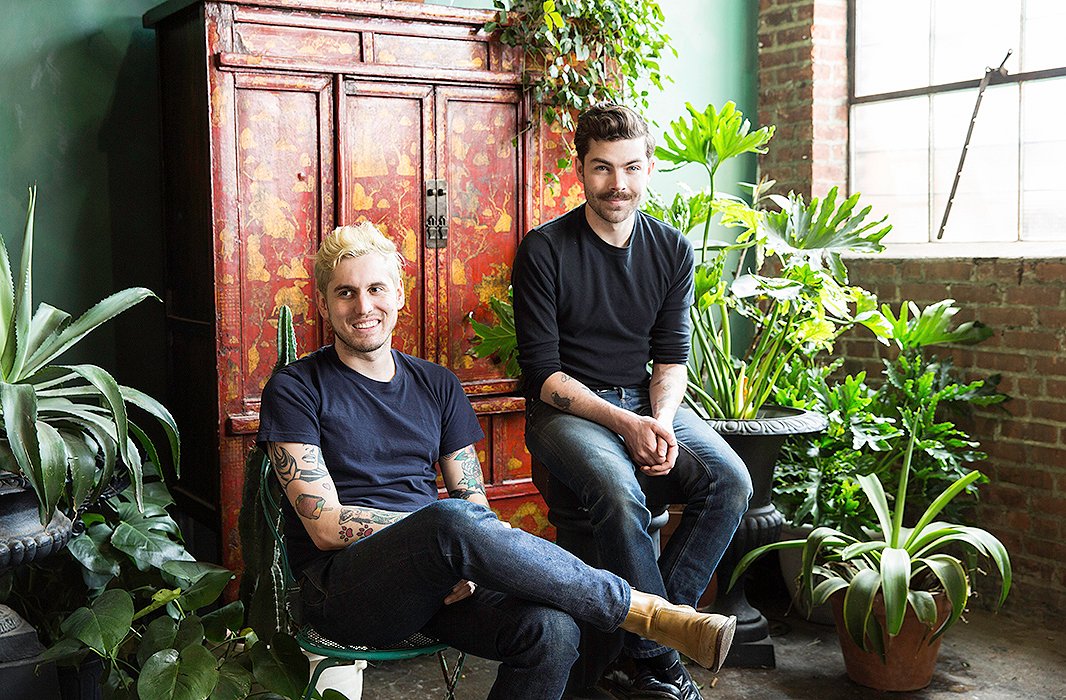
Michael (right) and Darroch Putnam, husbands and the business partners behind Putnam & Putnam, sit in their studio in front of a 350-year-old Chinese chest, given to them as a wedding present.
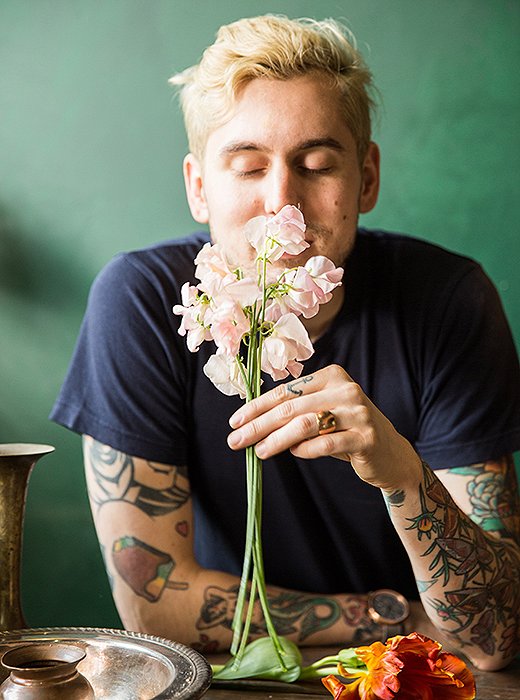
Darroch (here with sweet peas) handles the business end of Putnam & Putnam and photographs their work. Michael creates the arrangements.
Meet the Experts of the Current Floral Mood
I head to Williamsburg, Brooklyn, to learn from the men who are arguably the hottest florists in this new landscape—Michael and Darroch Putnam of Putnam & Putnam. Their arrangements walk an elegant line between antique beauty—they often use Victorian-inspired cloches and dusty palettes—and back-to-nature wildness. The fashion world can’t get enough of them, perhaps because they like to take flowers to uncharted territory: up into a 50-foot hanging garden or into a composition where everything, from the lemons to the vase, is pastel green.
When I arrive, Michael and Darroch have just returned from the flower market. Surrounded by buckets of flowers—plus some potted plants and paper-wrapped branches—they walk me through three different, but equally creative, styles of arrangement.
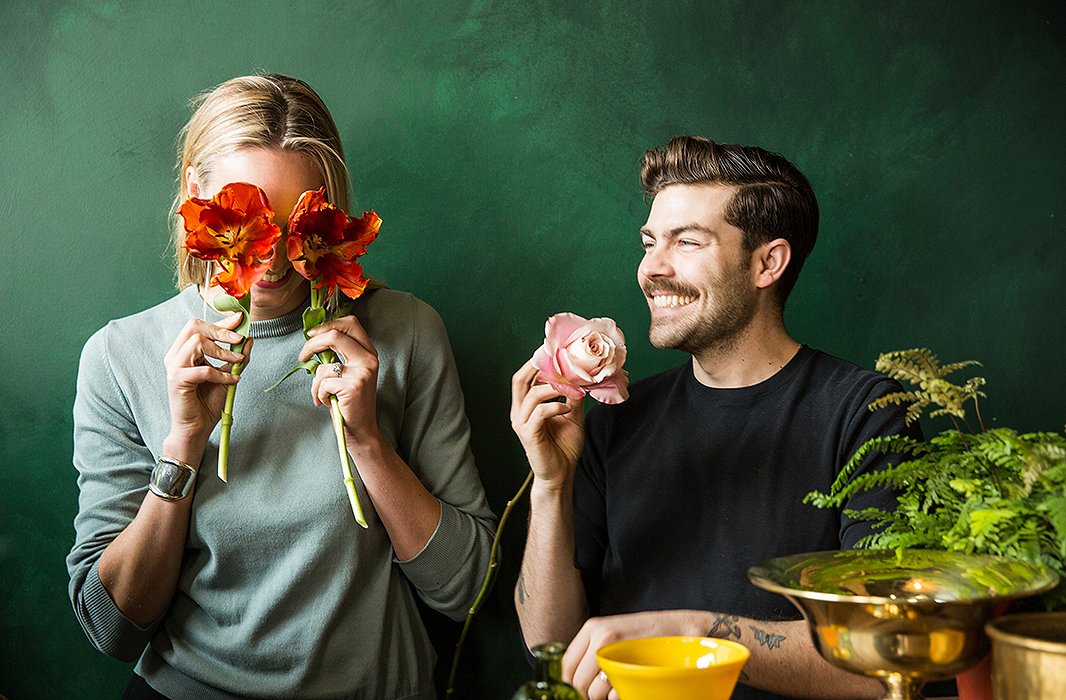
These wide-open tulips are clearly meant for great things.
The New Way to Arrange
When asked for some rules of thumb on flower arranging, Michael insists, “There really are no rules! That’s the whole fun of flowers.” But he does offer up some insight into the way he thinks about each arrangement, no matter what the style.
First, he likes to “keep things loose and leave lots of negative space” as he goes. Some floral designers of old tended to cluster flowers in tight packs, with no hint of their earthy origins, but it feels fresher to let the flowers breathe. It’s like the culinary world’s movement to celebrate each ingredient rather than coating it with sauce. You want to really see the flowers.
In the same vein, he doesn’t worry about symmetry or unevenness—there’s no need to keep the arrangement to one smooth overall height. Think, instead, of a garden filled with flowers of varying heights. “While I tend to keep the sides of an arrangement balanced, I really play with asymmetry around the top,” Michael says. He’ll often recut stems to make sure the arrangement has little areas of different depths.
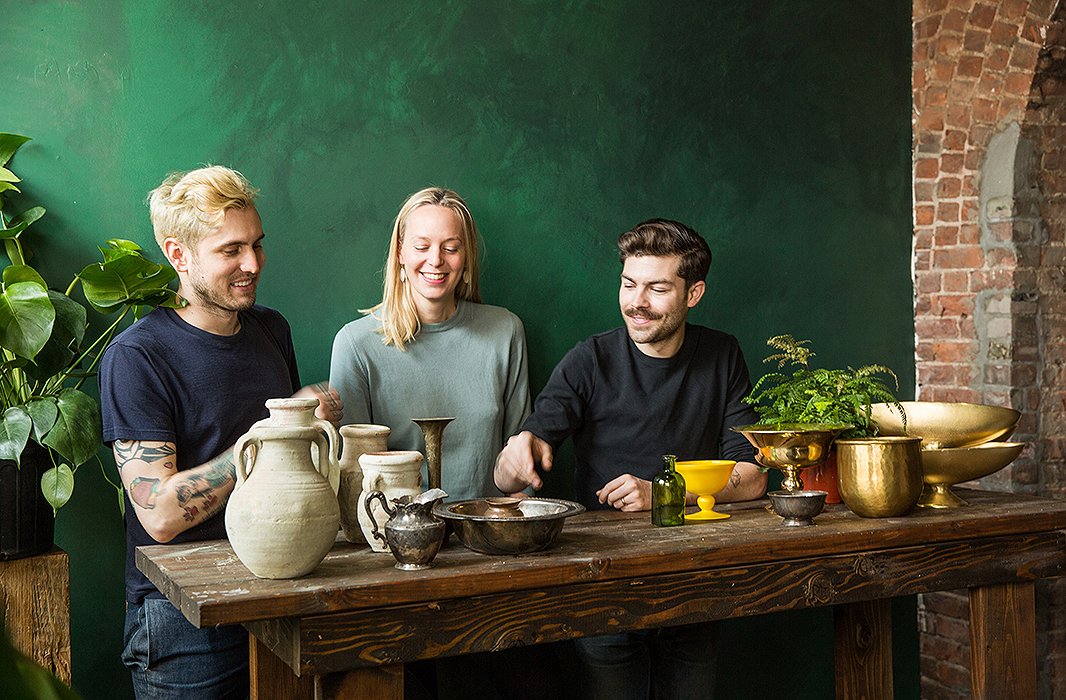
Putnam & Putnam’s collection of vessels goes far beyond the usual glass cylinders, encompassing Tuscan-style urns, antique silver pitchers, and ceremonial-feeling Chinese bronze bowls. When they want a specific color, they’ll paint a glass vessel—as they did with this yellow vase.

There really are no rules! That’s the whole fun of flowers.
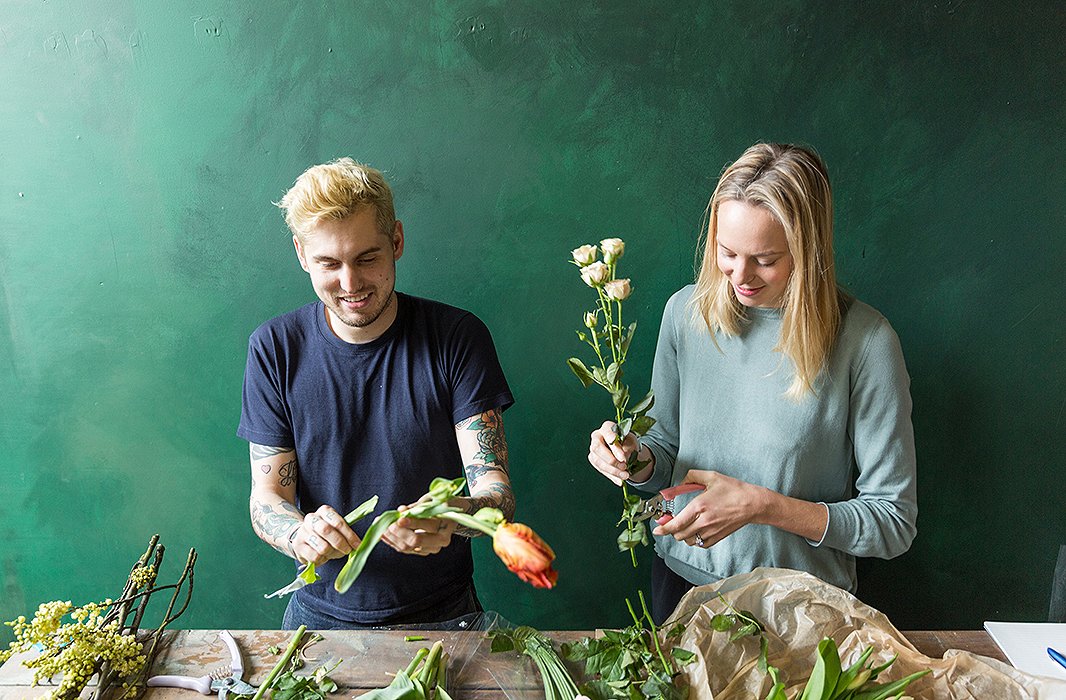
Darroch and I prep tulips and roses. You’ll need strong gardening shears for branch flowers like lilacs or spireas, so you might as well get one good pair to use for everything.
Arranging Prepwork
With Pandora streaming, we get to work prepping the flowers. This is akin to an artist laying out all her paints so that if she decides midpainting that she needs orange, she doesn’t to step out of the flow to chase down a tube of orange paint.
Prepping flowers is really about stripping off most of the foliage along the stem and giving the bottom a fresh, diagonal cut. Delicate flowers such as sweet peas need nothing more than the bottom trim. For roses, Michael cuts off all leaves up to the first bud so that the water can make it to the buds that need it most. For tulips, he strips off by hand the bottom one or two long leaves: “Any leaves that would be submerged in water can grow bacteria that kill the flower before its time.”
Michael places his arrangement on a lazy Susan that he can smoothly turn as he works, but you can just carefully turn your vase to get a 360 view or work on a small table and walk around it as you go.
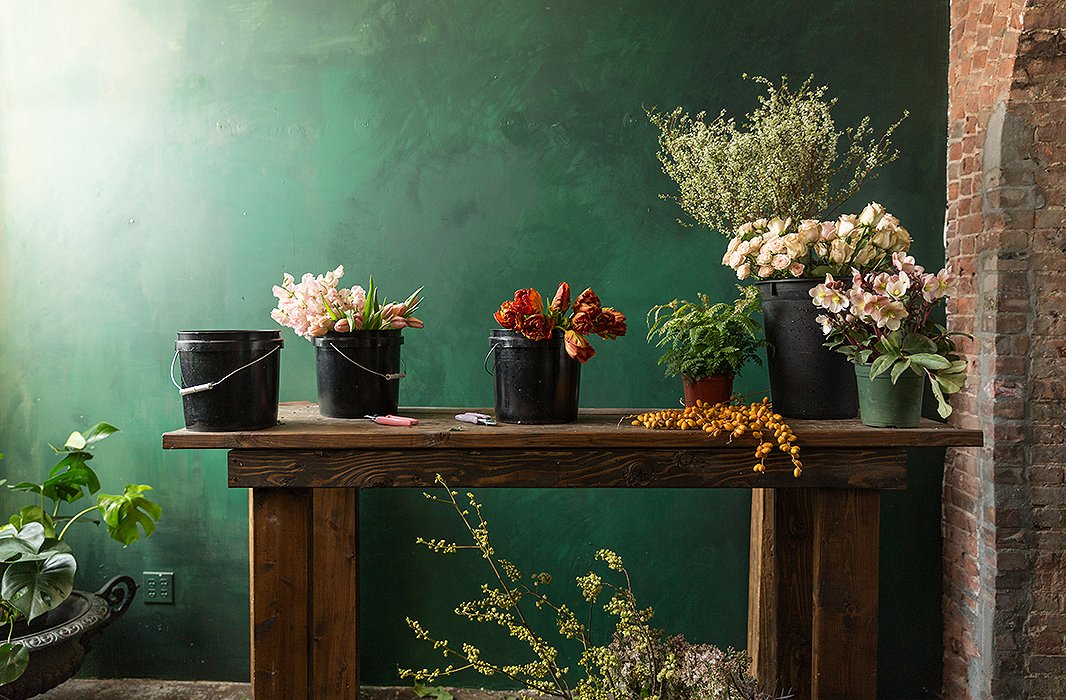
Among the haul from the flower market: yellow date palms, traditionally found in the Middle East.
Arrangement #1: A Lush, Romantic Mood
Our first arrangement is to be the biggest one: an overspilling bowl of flowers. With this style, Michael starts with one great branch or a high stem to “set a wild shape,” then works in “big-face flowers, like large roses, that really pull in your color palette.” He likes “dusty tones, popped with saturated hues” and looks for a bit of brown in his flowers. “A little brown gives it an antique spirit,” he says. “It also just looks chic.” It’s a lovely reminder that there’s no rush to toss the arrangement the moment you have a few browned petals.
As he begins showing the way, I ask Michael the age-old question of dining table arrangements: how to have a dramatic centerpiece that won’t block conversation. “It all depends on how dense it is,” he replies. “If it’s kept loose, having height is nice, because then everyone feels like they’re actually in the arrangement.” How wonderful to be able to feel as if you’re in a garden while sitting at the table! But keeping it loose turns out to be a challenge, if only because once you’re in the flow of this fun, abundant look, it’s hard to call it quits.
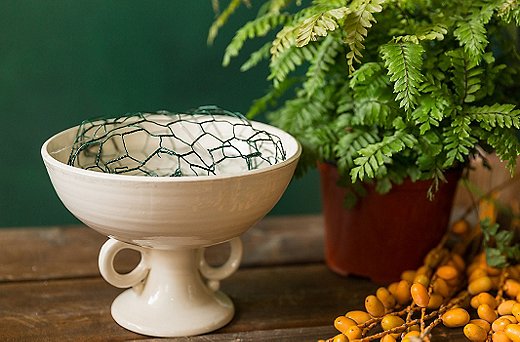
To arrange in a bowl, make a globe of chicken wire and set it into the bowl with clear tape before filling the bowl with water.

Having placed a tall spirea branch to set the height, Michael fills out the shape with masses of lilacs.
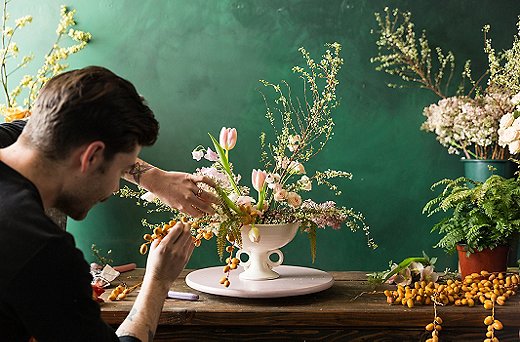
Letting something—like these palm dates—cascade down keeps things unfussy.
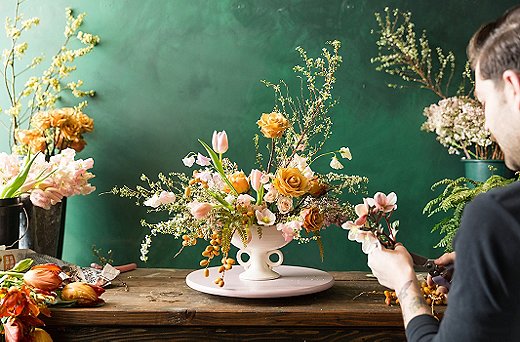
Michael clusters “face” flowers, like these roses on the right, rather than spreading them throughout.

Set a wild shape, then work in big-face flowers, like large roses, that really pull in your color palette.
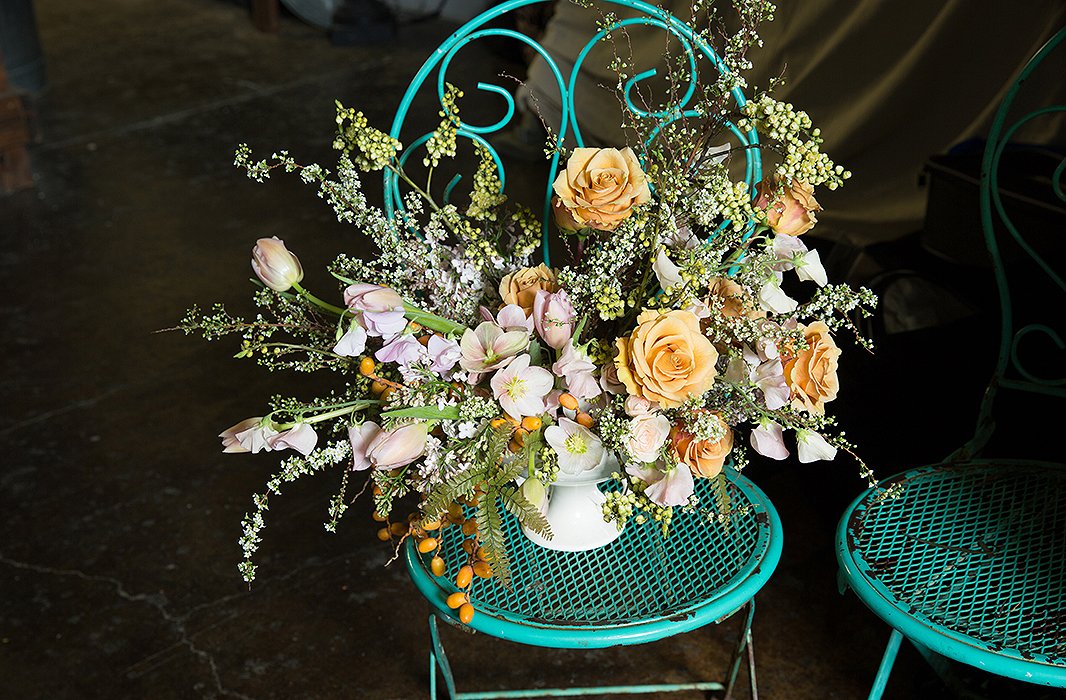
The result looks like a summer romance, freshly sprung from the garden. It’s also proper enough for any mantel. The white bowl was made by Frances Palmer.
Arrangement #2: Channeling Antique Beauty
When the moment calls for something especially enchanting or antique, Putnam & Putman pull out a cloche. Named after a Victorian-era hat, the cloche makes the entire arrangement “just feel special,” Michael says.
Glue a piece of floral foam (soaked in water until it floats) to the bottom, and you are ready to go. One word of warning from Michael: “You can’t go too crazy with flowers, because then they’ll get crushed when you put the cloche on.” If you keep the scale in check, the flowers will look as if they’ve grown there. Begin with green foliage around the base, then add height, then dot the arrangement with special blossoms. Garden roses picked at the height of summer are perfect.
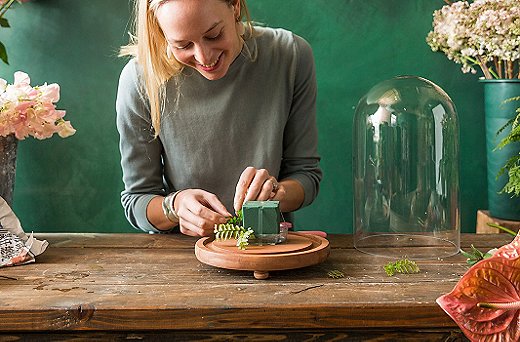
“Start by setting perimeters—you need one piece of greenery that tells you how wide you can go,” Michael says.
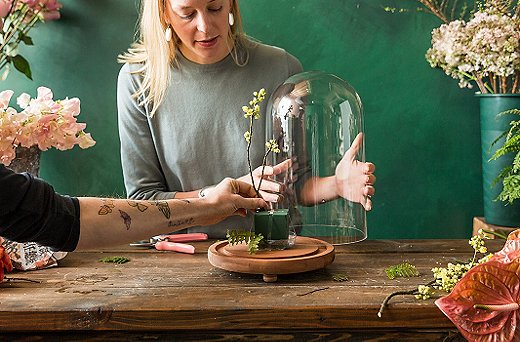
The second perimeter is the height. Hold the cloche up to one of the bigger flowers you plan to use, and make sure the flower won’t be touching the top.
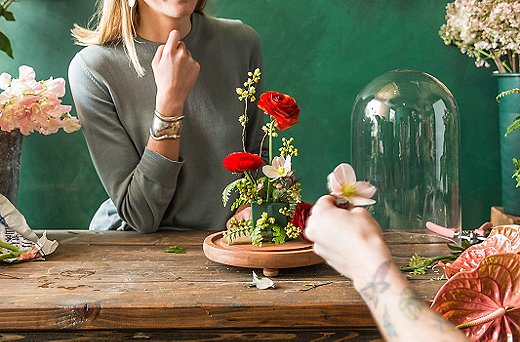
“You want the flowers to be facing in different directions,” says Michael. He suggests working in odd numbers—like these three red roses.
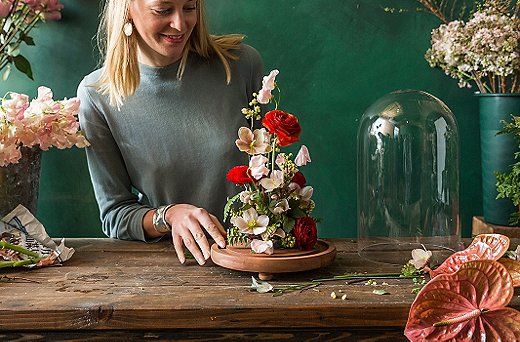
When you can’t fit anything else in the foam, you’re done. No need to rewet the foam. If the cloche gets fogged up, simply take it off the flowers for a few minutes.
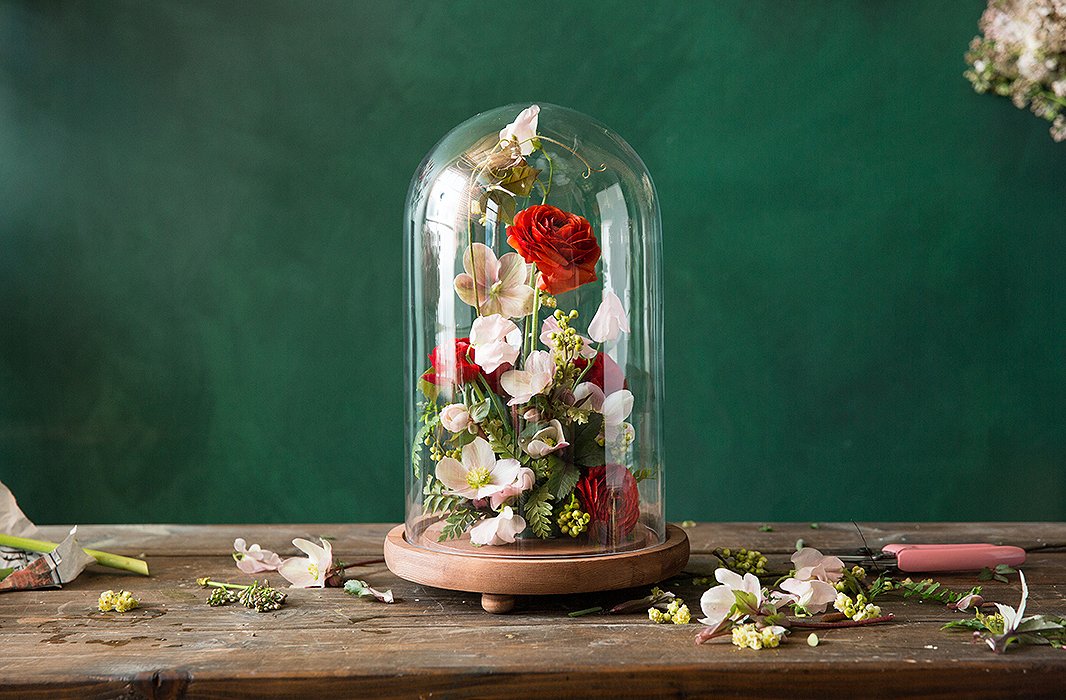
The overall effect is almost like looking at flowers through a magnifying glass—you have an even richer appreciation of their beauty. At the end, Michael adds a long tendril of a vine, letting it curve across the top.
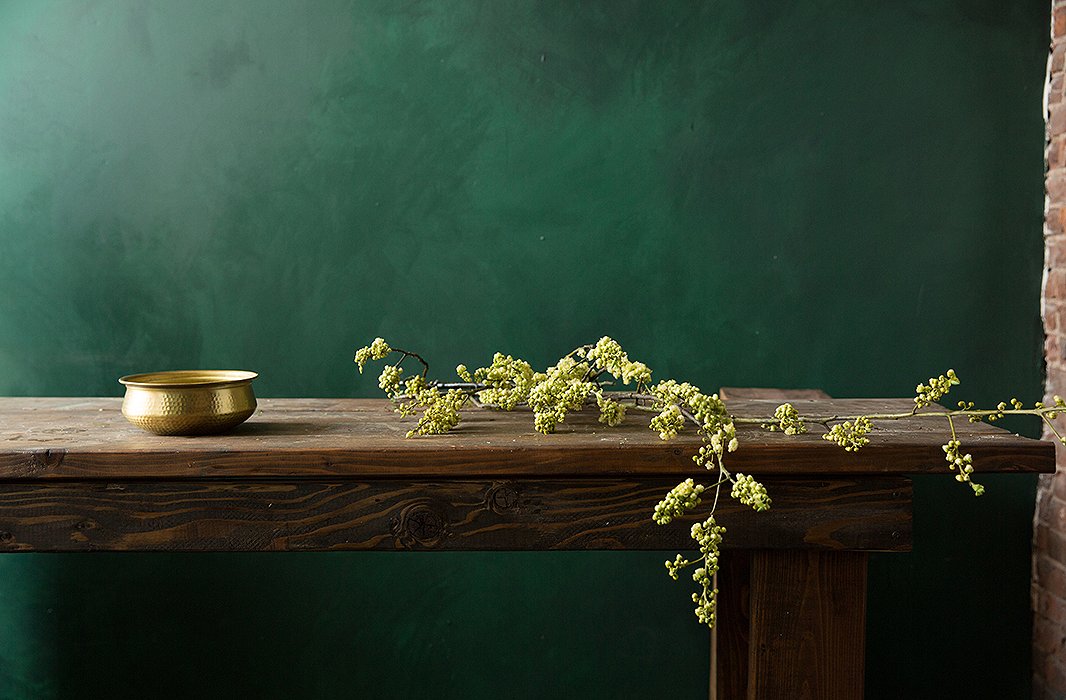
With ikebana, the Japanese art of flower arranging, one of the goals is to find harmony between the flower and the vessel.
Arrangement #3: Getting Zen
Many floral designs right now have Eastern leanings; ikebana, the Japanese art of flower arranging, is very much in the air. It favors arrangements made up of a few beautiful blossoms and nothing more. This suits Michael’s taste to a T—he went to high school in Japan and is constantly drawn back to Japanese flowers like ranunculus, scabiosas, and sweet peas.
The trick is to choose those few flowers well and make sure they have a graceful line—in this style, you see everything from tip to toe. As we go, we add a few flowers, then subtract a few; each one packs so much punch, you have to think hard about every choice. This process is the quietest one—when you’re paying such close attention to each flower, it becomes almost meditative.
For the vessel, Michael chooses a bowl outfitted with a floral frog, but a vase is also great here.
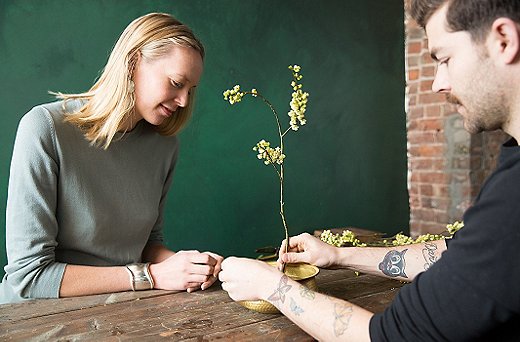
Start with one striking branch. For larger stems or branches, you may need to split the bottom to get it into the floral frog.
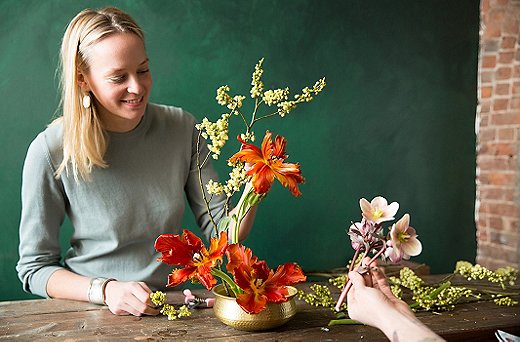
Michael splays open some red tulips to create an even more interesting shape.

We snip some hellebore blossoms off a plant to add low layers of flowers.
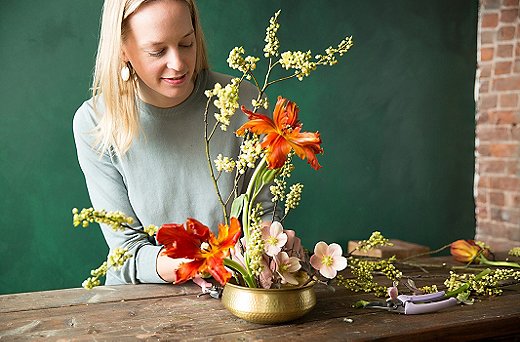
The floral frog really holds steady on each stem (nothing moves even after I bring the whole thing home).
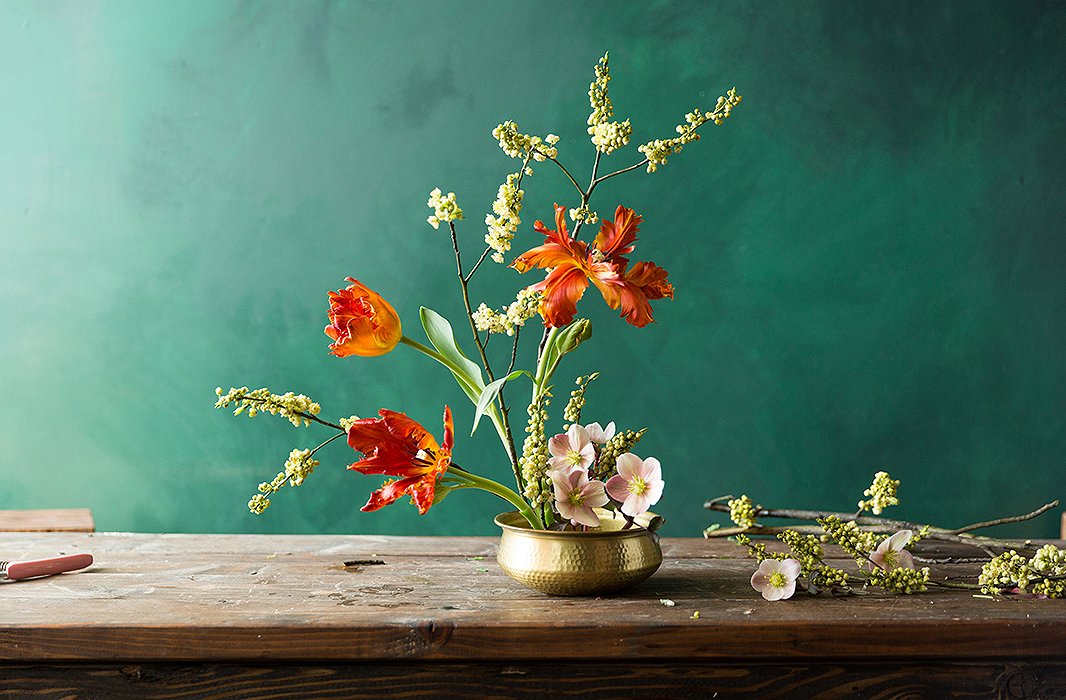
With such extreme minimalism, “this is a moment to really play with gesture and asymmetry,” Michael says.

This is a moment to really play with gesture and asymmetry.
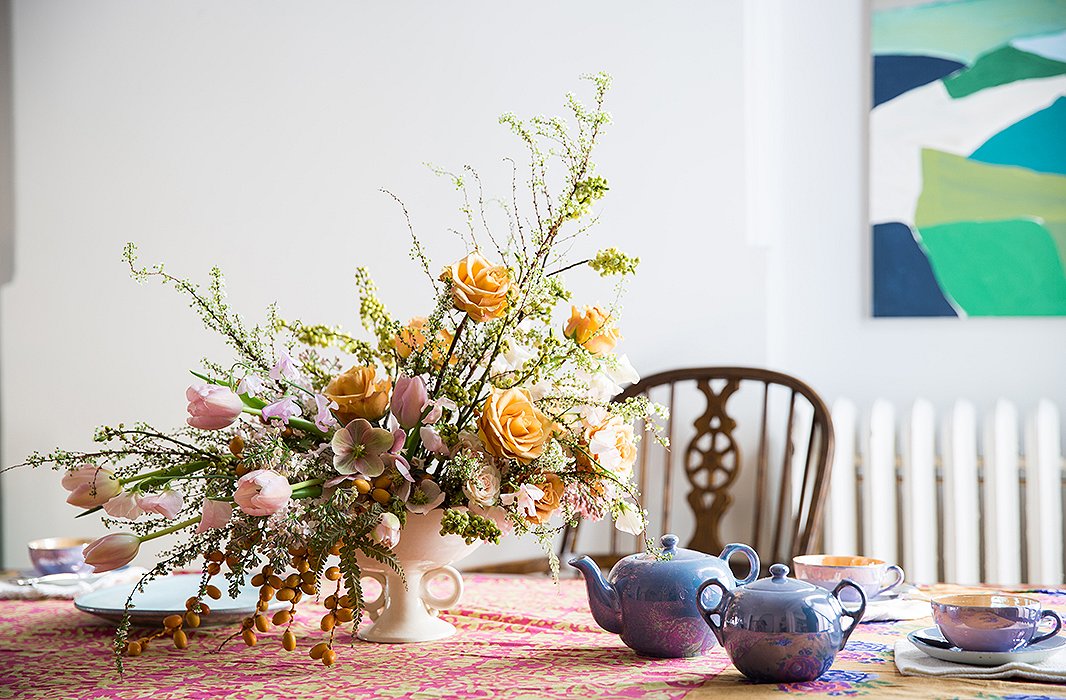
Something about this super-feminine arrangement calls for tea.
Bringing the Beauty Home
I bring the arrangements home to live with them and see how they feel in the context of my day-to-day life. Each is a joy to have around, but the overspilling bowl turns out to be my favorite. It’s such fun to get loose with flowers and pile them on—it feels extravagant, like a crazy art project in the best sense. I want to do it again and again.
I haven’t dipped into the adult coloring-book craze, but I’m guessing that flower arranging is an even more relaxing, transporting way to bring a little art into our stress-saturated days. An hour with flowers connects you to the natural world, lets you think about color (instead of your inbox), and gives you something to savor for the coming week. It’s a treat-yourself act, for sure, but it also has a long tail and gives everyone else in your home pleasure too.
One parting idea: If you want to be next-level kind, make an arrangement for someone else. A friend of mine once did that for me when I was feeling low. She included lemons still on their branches, which is the most optimistic thing you can think of, and it was doubly thoughtful to receive a flower arrangement that she’d spent time dreaming up.
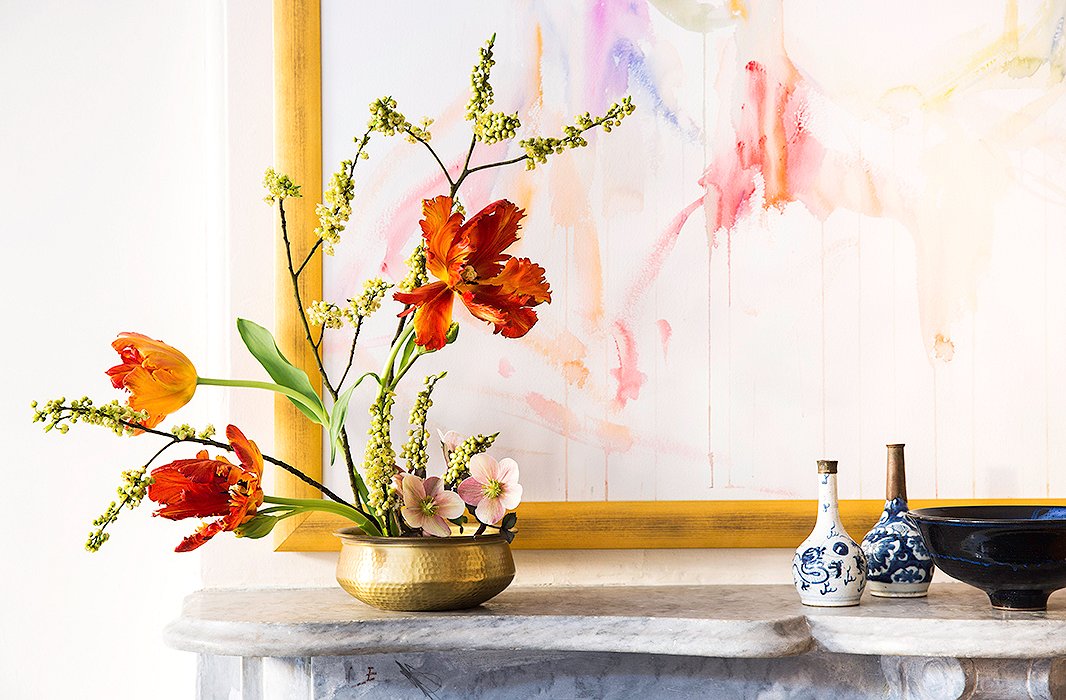
The Japanese-inspired arrangement on our bedroom mantel—it needs to be set against a backdrop so that you can see all its lines.
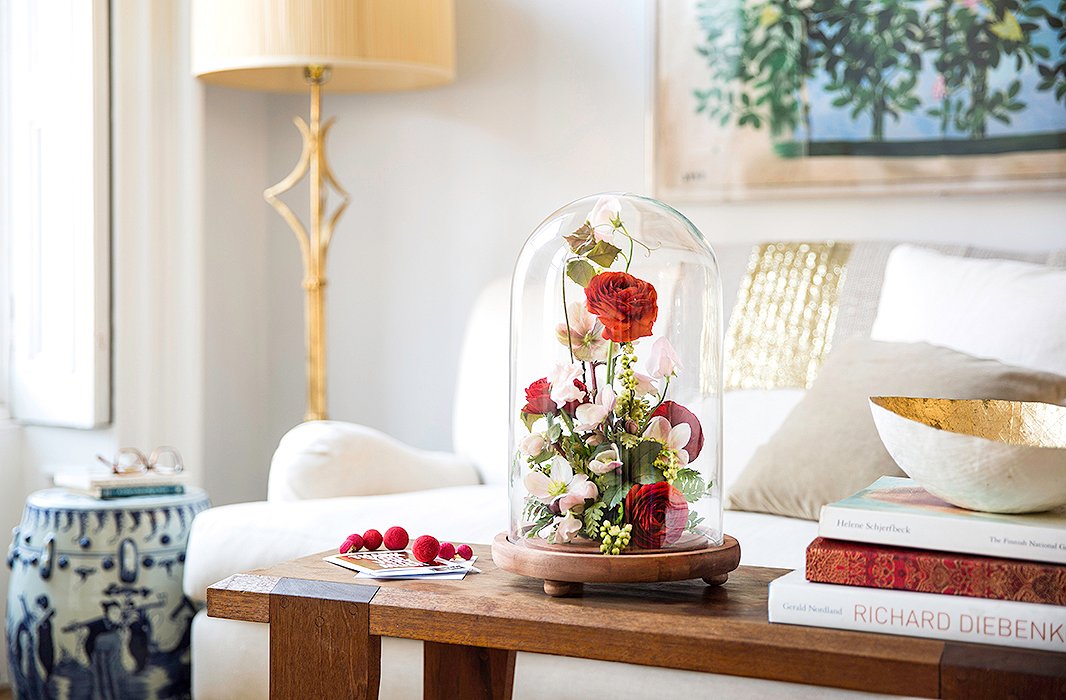
After putting the cloche on our coffee table, I move it to the dinner table one night. It looks even sexier at night, lit by candles.
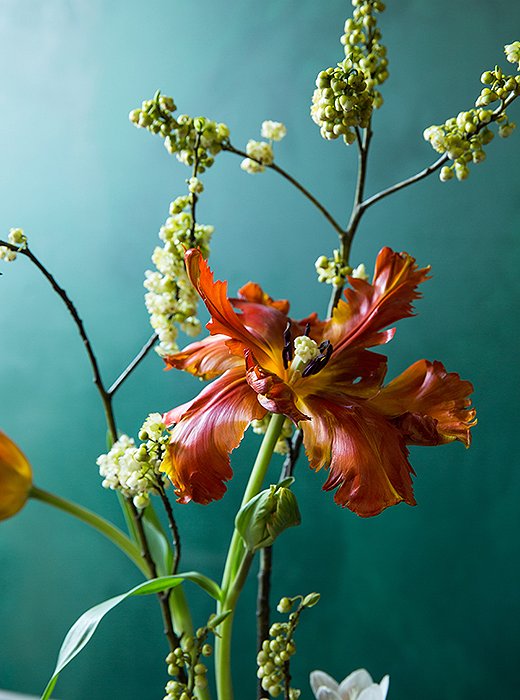
Pro Tips for Flower Shopping
Michael and Darroch are flower-shopping aces—they’re regular early birds at New York’s Chelsea Flower District, and when they teach faraway workshops they need to hit the ground running. Here, they share some expert advice on getting the best flowers wherever you are:
Think Outside the Flower Market: Check out the farmers’ market, and ask around. In a city, don’t turn your nose up at the flowers in a bodega—if options are limited, Michael says, “just stay in a monochrome palette. If the color is right, the fact that you’re using a chrysanthemum, carnation, or alstroemeria won’t matter.”
Consider Buying Plants: Michael and Darroch often buy plants when something they want isn’t available as a cut flower. Bonus: You don’t have to use it all at once, and it can end up being less pricey per stem.
Refashion the Usual Suspects: Even a flower you think you’ve seen a million times can look different. For our arrangements, Michael used ballerina-like pale-pink tulips as well as blood-red tulips with a rough edge. For the latter, he opened up the petals for even more dramatic effect.
Rethink Filler: Rather than baby’s breath, Michael loves to use spray roses or sweet pea. I’ve always loved the frothy green of lady’s mantle—it makes an arrangement look as if it’s still in the garden.
There’s No Such Thing As Off-Limits (or Passé): Anything goes: a blackberry branch that catches your eye, an agave leaf with a great curve. At the same time, don’t worry about overuse—gerbera daisies might strike some as overused, but Michael found some Japanese varieties he says are “ruffly and frilly, and the color of butter. They’re beautiful to use.”
As for supplies such as floral foam and cloches, Jamali is their go-to.
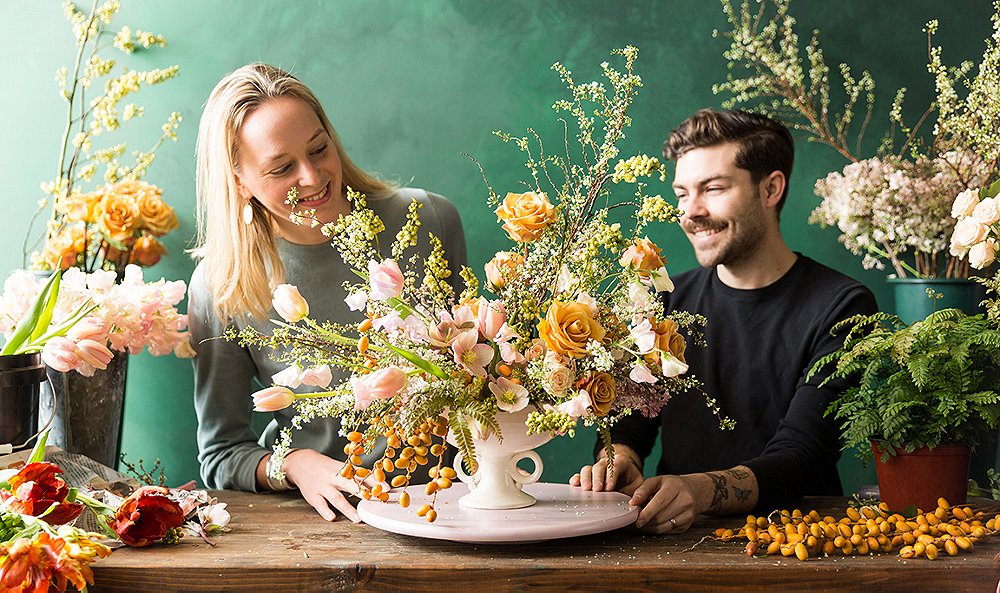
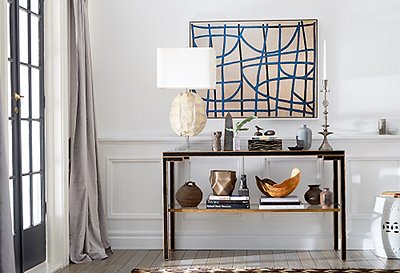
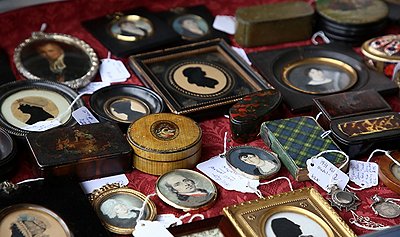

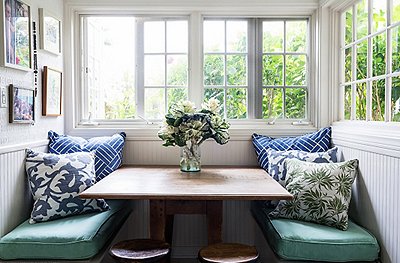
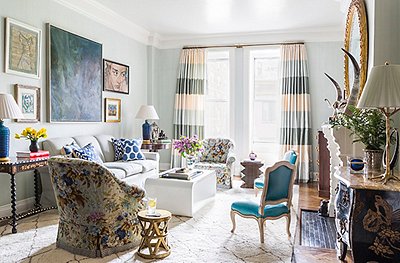
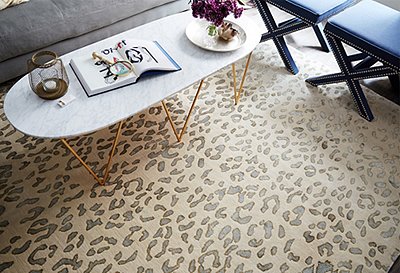
Flower arrangements is the thing that I like very much. I just love flowers so I always search the new things related to flowers online. While searching I reached here. It is very good and detailed information about flower arrangements. I really appreciate that you shared it. I am defiantly going to try this and will tell you how it went and my experience.